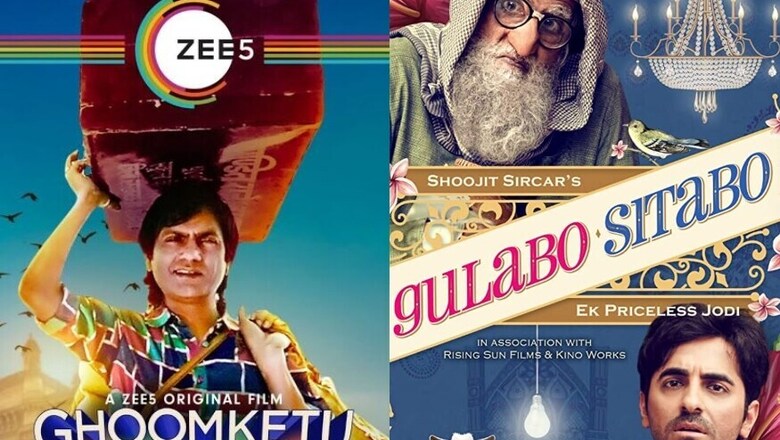
views
OTT platforms are the obvious answers for content creators and consumers when thetares are closed. Even if they open, it seems highly unlikely that many would dare to step inside cinema halls. However, releasing a film on OTT has its own set of challenges. Let’s dig deep into it.
The numbers are in favour of streaming apps. Aparna Acharekar, Programming Head, ZEE5 India, said that the streaming platforms have registered a record growth. “During April 2020, we witnessed a spike of 80% in watch-time growth on connected devices as compared to the February 2020 figures. We also had a 45% increase in paid viewership, as well as a 3X and 2.3X growth in original consumption among women and men respectively compared to last year,” she said.
OTT and wider reach
Acharekar believes that with almost every industry going digital, it’s high time that Bollywood too experiments. “The OTT sector in India is a steadily growing market and is one segment in the entertainment industry which has done significantly well in the COVID-19 market. With no clarity on when and how usual activities and theatres will start, OTT provides the relief and tremendous reach that filmmakers and producers need to keep the show running,” she said.
Ronnie Lahiri, whose Gulabo Sitabo (starring Amitabh Bachchan and Ayushmann Khurrana) recently released on Amazon Prime Video, echoes similar sentiments. He said, “One of the most important things of premiering the film on OTT is that we are getting a release in 200 countries which is a very big thing. It opens newer markets for Indian cinema. And with a big name like Mr Bachchan, who is known worldwide, why not give them his film? The world’s watching habits are changing, people are streaming different things at home like an Israeli or Spanish series. So why not they watch Indian content too.”
Streaming services and non-metro cities
When it was first announced that Ghoomketu and Gulabo Sitabo will make it to Zee5 and Amazon Prime Video directly, it was argued that the films will lose out large demography stationed in non-metro cities. Because OTT platforms are believed to be unpopular medium in the non-metro cities. However, the stats are different.
“Zee5 has observed that a little over 50% of our viewing is coming from the non-metros. In the regional markets too, we saw a rapid uptick in the numbers from the pre-pandemic figures within the first four weeks of the lockdown itself," said Achrekar, adding, "Nawazuddin Siddiqui’s Ghoomketu, within days of its launch, became the second most watched original film on Zee5 after Rangbaaz."
Similarly, Lahiri said, “Not even 10% of the population of our country goes out to see a film in cinema halls. If we can provide a commercial family film to a streaming service, technically more number of people are watching it.”
Tackling piracy
With better reach and larger audience, streaming services will also face the brunt of piracy.
“We use robust DRM mechanism to protect content from getting pirated. We proactively monitor pirated versions and bring these down. In case of repeat offenders, we even send out legal notices,” said Achrekar.
That doesn’t seem enough as Gulabo Sitabo was leaked by the piracy website within hours of its release on Amazon Prime Video. However, Lahiri is unfazed by piracy on streaming platforms. He knows the pain as he has faced the worst in the past. He recalls a time when his production partner Sujit Kumar Singh’s film Yakeen starring Priyanka Chopra and Arjun Rampal leaked online even before it made it to the theatre.
Cinema and its digital evolution
Lahiri also talked about the OTT versus cinema halls contention. “Cinema has always been part of evolution and that's how it has managed to survive for so long. There are always purists for everything. So it is a question of how you evolve,” he said.
Well, starting from silent talkies to black and white films to technicolour and from single screens to multiplexes, cinema has had its phases. Now, it is in the digital phase. Like other eras, this too is likely to remain here for some years at least.
Follow @News18Movies for more

















Comments
0 comment